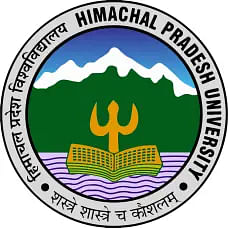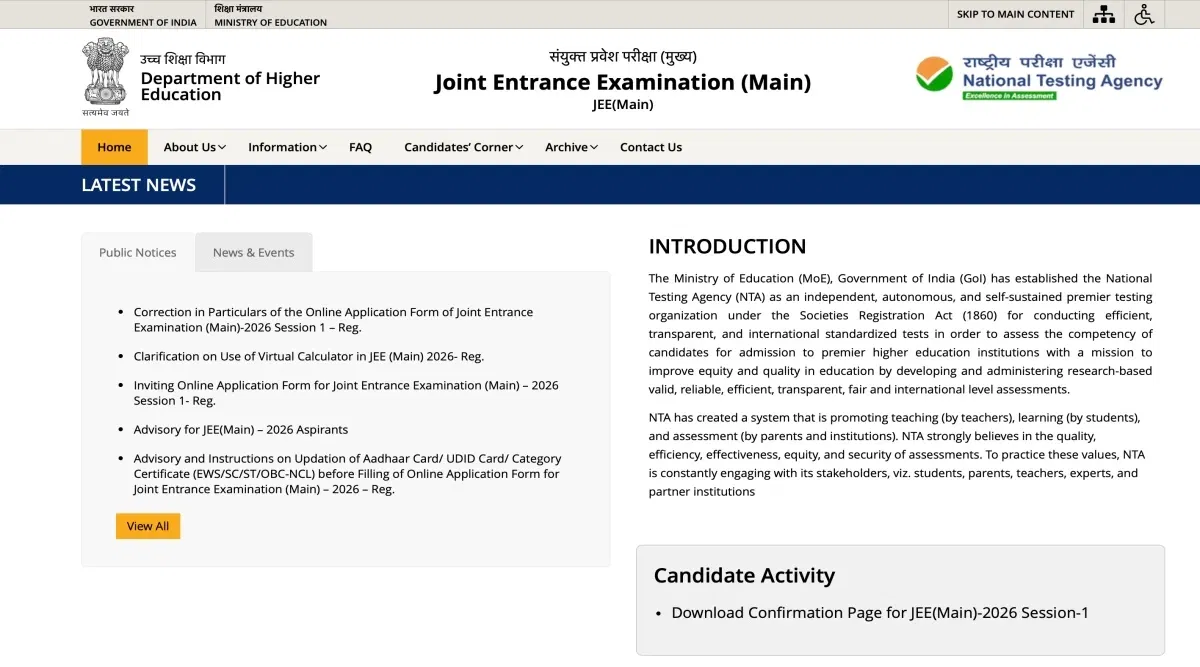Environmental Microbiology, Environmental Chemistry, Water Resources and Environmental Hydraulics, and Air and Noise Pollution are some of the sections that are included in the GATE Environmental Science and Engineering syllabus 2024.
Table of Contents
GATE Environmental Science and Engineering syllabus includes nine subject sections and a General Aptitude Section. The GATE 2024 General Aptitude section and the Mathematics Foundation section account for 15 and 13 marks respectively out of 100 marks.
The students can plan and prepare for the GATE 2024 with the help of the GATE Environmental science and Engineering syllabus to score high marks and get into their desired college.
GATE Environmental Science and Engineering Syllabus
Candidates who aim to pursue the GATE Environmental Science and Engineering program must be thorough with the prescribed syllabus to crack the exam. The following tabulation consists of the GATE Environmental Science and Engineering syllabus.
Mathematics Foundation
- Linear Algebra: Determinants and matrices, Systems of linear equations, Eigenvalues and eigenvectors.
- Calculus: Functions, Limit, Continuity, Differentiability, Local maxima and minima, Taylor series, Tests for convergence, Definite and indefinite integrals, Application of definite integral to obtain area and volume, Partial and total derivatives.
- Differential Equations: Linear and non-linear first order ordinary differential equations (ODE), Higher order linear ODEs with constant coefficients, Cauchy’s and Euler’s equations, Laplace transform and its application in solving linear ODEs.
- Probability and Statistics: Descriptive statistics, Measurement of central tendency, Dispersion, Skewness and kurtosis, Probability concepts, Conditional probability, Bayes theorem, Risk and reliability, Probability distributions, Correlation, Single and multiple regression models, Hypothesis testing (t-test, F-test, chi-square test).
Environmental Chemistry
- Fundamentals of Environmental Chemistry: Covalent and ionic bonding; Chemical equations, concentration and activity; Structure and chemistry of organic molecules; Radioactivity of elements; Chemical equilibria; Thermodynamics and kinetics of chemical reactions.
- Principles of water chemistry: Water quality parameters and their measurement; Acid-base equilibria; Buffer solution; Carbonate system; Solubility of gases in water; Complexation, precipitation, and redox reactions; Inorganic and organic contaminants in water and their speciation.
- Soil chemistry; Organic matter, nitrogen, phosphorus, potassium, cation exchange capacity, base saturation, and sodium absorption ratio.
- Atmospheric Chemistry: Composition of the atmosphere; Reactivity of trace substances in the atmosphere; Urban atmosphere—smog and particulate pollution; Chemistry of ozone formation; Chemistry of stratosphere.
Also Check: GATE Engineering Sciences Syllabus 2024
Environmental Microbiology
- Prokaryotic and eukaryotic microorganisms; Characteristics of diverse groups of microorganisms; Classification of microorganisms; Microbial diversity; Plant-microbe and soil- microbe interactions; Role of microorganisms in wastewater treatment, bioremediation and biogeochemical cycling.
- Cell chemistry and cell biology: Structure of proteins, nucleic acid (DNA & RNA), lipids and polysaccharides; Bonds in biomolecules; Stereoisomerism in biomolecules; Structure of cell;
Structure and function of cytoplasmic membrane, cell wall, outer membrane, glycocalyx, chromosomes, endospores, storage products, mitochondria and chloroplasts. - Microbial metabolism: Anabolism and catabolism; Phosphorylation; Glycolysis; TCA cycle; Electron transport chain; Fermentation; Anaerobic respiration; Energy balances; Enzymes and Enzyme kinetics.
- Growth and control of microorganisms: Bacterial nutrition and growth; Specific growth rate and doubling time; Monod’s model; Types of culture media; Batch and continuous culture; Effects of environmental factors on growth;
Control of microbes using physical and chemical methods. - Microbiology and health: Pathogens and modes of transmission; Indicator organisms; Quantification of coliforms using MPN and membrane filtration techniques.
Water Resources and Environmental Hydraulics
- Global Water Resources: Structure, properties and distribution of water; Water quality; Threats to water resources; Water conservation.
- Surface Water Resources: Hydrological cycle and water balance - precipitation, infiltration, evapotranspiration, runoff; Flow hydrographs; Unit hydrographs; Stage-discharge relationship; Reservoir capacity; Reservoir and channel routing; Surface run-off models; Surface water management; Rain water harvesting and storage.
- Groundwater Resources: Geologic formations as aquifers; Vadose and saturated zones; Confined and unconfined aquifers and their parameters - porosity, permeability, transmissivity and storage coefficient; Darcy’s law and applications; Steady state well hydraulics.
- Environmental Hydraulics: Concepts of mechanics; Properties of fluids; Pressure measurement; Hydrostatic force on surfaces; Buoyancy and flotation; Laminar and turbulent flow; Flow through pipes; Pipe networks; Boundary layer theory;
Forces on immersed bodies; Flow measurement in channels and pipes; Kinematics of flow; Continuity, momentum and energy equations; Channel hydraulics - specific energy, critical flow, hydraulic jump, rapid and gradually varied flow;
Design of lined and unlined channels.
Water & Wastewater Treatment and Management
- Water and wastewater quality parameters; Eutrophication and thermal stratification in lakes; River pollution - Oxygen sag curve.
- Water treatment methods - screening, sedimentation with and without coagulation, filtration, desalination, disinfection; Water distribution and storage
- Point and nonpoint sources of wastewater; Population forecasting methods; Design of sewer and storm water sewers; Sewer appurtenances; Preliminary, primary, secondary and tertiary sewage treatment;
Sludge generation, processing and disposal methods; Sewage farming. - Sources and characteristics of industrial effluents; Concept of Common Effluent Treatment Plants (CETP); Wastewater recycling and zero liquid discharge.
- Kinetics and reactor design: Mass and energy balance, Order and rate of reactions, Batch reactors, Completely mixed flow reactors, Plug flow reactors.
Also Check: GATE Geomatics Engineering Syllabus 2024
Air and Noise Pollution
- Structure of the atmosphere; Natural and anthropogenic sources of pollution; Atmospheric sources, sinks, transport; Indoor air pollution; Effects on health and environment; Air pollution: gases and particulate matter;
Air quality standards; Primary and secondary pollutants; Criteria pollutants, ambient and source standards, air quality indices, visibility. - Particulate pollutants: measurement and control methods; Control of particulate air pollutants using gravitational settling chambers, cyclone separators, wet collectors, fabric filters (Bag- house filter), electrostatic precipitators (ESP).
- Gaseous Pollutants: Measurement and control methods; Control of gaseous contaminants: absorption, adsorption, condensation and combustion; Control of sulphur oxides, nitrogen oxides, carbon monoxide, and hydrocarbons;
Vapour-liquid and vapour-solid equilibria; Diffusion, Fick’s law and interfacial mass transfer. - Automotive emission controls, fuel quality, diesel particulate filters, catalytic convertors.
- Air quality management: Point, line and area sources; Inventory; Influence of meteorology - wind rose diagrams, stability, mixing height, topography, dispersion modelling, monitoring.
- Noise pollution: Sources; Health effects; Standards; Measurement and control methods.
Solid and Hazardous Waste Management
- Integrated solid waste management; Waste hierarchy; Rules and regulations for solid waste management in India.
- Municipal solid waste management: Sources, generation, characteristics, collection and transportation, waste processing and disposal (including reuse options, biological methods, energy recovery processes and landfilling).
- Hazardous waste management: Characteristics, generation, fate of materials in the environment, treatment and disposal.
- Soil contamination and leaching of contaminants into groundwater.
- Management of biomedical waste, plastic waste and E-waste: Sources, generation and characteristics; Waste management practices including storage, collection and transfer.
Also Check: GATE Architecture and Planning (AR) Syllabus 2024
Global and Regional Environmental Issues
- Global effects of air pollution – Greenhouse gases, global warming, climate change, urban heat islands, acid rain, ozone hole.
- Ecology and various ecosystems; Biodiversity; Factors influencing increase in population, energy consumption, and environmental degradation.
Environmental Management and Sustainable Development
- Environmental Management Systems; ISO14000 series; Environmental auditing: Environmental Impact Assessment; Life cycle assessment; Human health risk assessment
- Environmental Law and Policy – Objectives; Polluter pays principle, Precautionary principle; The Water and Air Acts with amendments; The Environment (Protection) Act (EPA) 1986; National Green Tribunal Act, 2010;
National Environment Policy; Principles of International Law and International treaties. - Energy and Environment: Energy sources – overview of resources and reserves; Renewable and non-renewable energy sources; Energy-Environment nexus.
- Sustainable Development: Definition and concepts of sustainable development; Sustainable development goals; Hurdles to sustainability; Environment and economics
Also Check: GATE Mining Engineering Syllabus 2024
GATE General Aptitude Section Syllabus
The GATE General Aptitude section has a weightage of 15 marks in the GATE question paper. The GATE syllabus for the same is tabulated below.
| Verbal Ability | Numerical Ability |
| English grammar; Sentence completion, Instructions; Verbal analogies, Word groups; Critical reasoning, Verbal deduction. | Numerical computation; Numerical reasoning; Numerical estimation; Data interpretation. |
Also Check: What is a Good GATE Score 2024?
Exam Pattern of GATE Environmental Science and Engineering
The following is the exam pattern of GATE. Candidates must pay extra attention to the distribution of marks given in the GATE exam pattern.
| Particulars | Details |
| Exam Mode | Online, Computer Based Test (CBT) |
| Duration | 3 hours |
| Total Questions | 65 |
| Total Marks | 100 |
| Types of Questions | Multiple Choice Questions |
| Numerical Answer Type (NAT) Questions | |
| Sections | General Aptitude |
| Subject-based | |
| Marking Scheme | MCQ - Negative marking; 1/3 for 1 mark questions, 2/3 for 2 marks questions |
| NAT/MSQ - No negative marking |
Also Check: GATE Exam Pattern
Distribution of Marks
| Section | Distribution of Marks | Total Marks | Types of questions |
| General Aptitude | 5 questions of 1 mark each 5 questions of 2 marks each | 15 marks | MCQs |
| Subject Paper (ES) + Mathematics Foundation | 25 questions of 1 mark each 30 questions of 2 marks each | 85 marks | MCQs, MSQ and NATs |
Also Check: GATE Mechanical Engineering Syllabus 2024
GATE Environmental Science and Engineering - Books for Preparation
Referring to the right books for preparation will enhance your knowledge and understanding of the syllabus. The best-recommended books for GATE Environmental Science and Engineering preparation are mentioned below.
| Title of the book | Name of the Author/ Publication |
| Assessments of Regional and Global Environmental Risks – Designing Processes for the Effective Use of Science in Decision Making | AE Farrell |
| Environmental Management for Sustainable Development (Routledge Environmental Management Series) | Chris Barrow |
| Solid and Hazardous Waste Management | S. Bhatia |
| Solid and Hazardous Waste Management | M.N Rao |
| Air and Noise pollution control | Lawrence K Wang |
| Wastewater Treatment Technologies: Design Considerations (Challenges in Water Management Series) | Mritunjay Chaubey |








![Indian Institute of Technology, [IIT] Bombay](https://media.getmyuni.com/azure/college-image/small/indian-institute-of-technology-iit-bombay.jpg)

![Indian Institute of Technology, [IIT] Kanpur](https://media.getmyuni.com/azure/college-image/small/indian-institute-of-technology-iit-kanpur.jpg)
![Indian Institute of Technology, [IIT] Kharagpur](https://media.getmyuni.com/azure/college-image/small/indian-institute-of-technology-iit-kharagpur.jpg)





























POST YOUR COMMENT